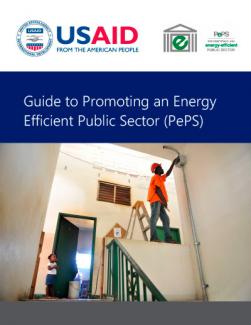This guide provides a detailed look at strategies and success stories for government action on energy efficiency.
The driving force behind PePS is the opportunity for governments to lead by example. While the degree to which government actions impact their respective energy efficiency markets varies, the opportunity to directly reduce operational budgets through reduced energy bills and decrease greenhouse gas (GHG) emissions is almost universal. In addition, regardless of their stage of development, the majority of countries have the potential to significantly scale up energy efficiency through government projects that create broad public exposure to efficiency technology and benefits. Through project specifications, the construction sector is also provided an opportunity to understand and use new materials and practices. When governments pair direct action on energy efficiency in their own facilities with national policies and regulation on energy efficiency, the market can effectively be opened up to new private sector investment and increased uptake of products and services that decrease energy demand.
This guide provides a detailed look at strategies and success stories for government action on energy efficiency. Existing buildings and new construction, purchasing policies, public infrastructure, and public transportation all provide opportunities for governments to make progress on efficiency. Details and examples of how these programs can be designed and implemented are provided along with guidance on project financing. National and local governments, and those that support them, can use this guide to assess the best opportunities for energy efficiency programs and start small, or big, to begin to shift their markets towards becoming cleaner, more efficient, and sustainable.

